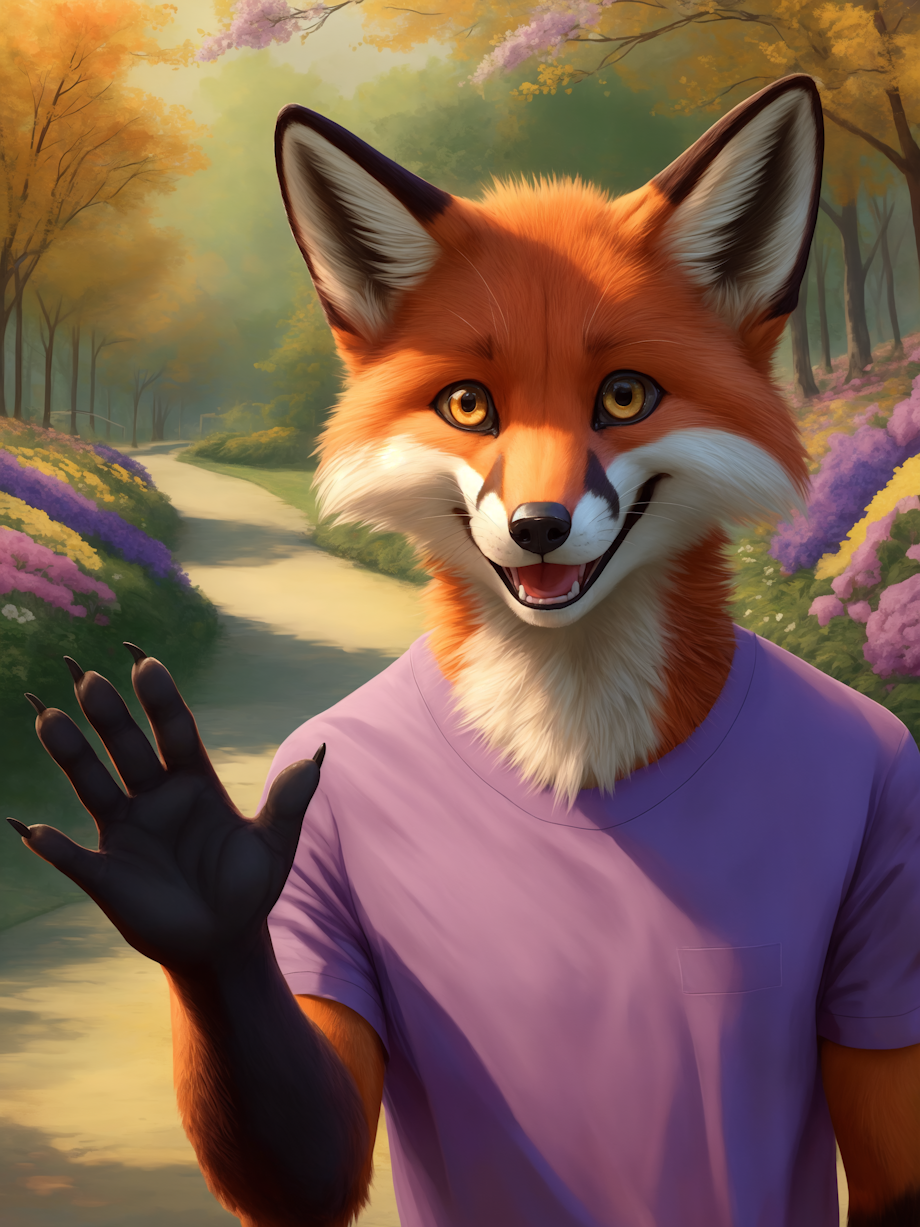
| " |
male fox, furry, (solo:1.1), short sleeve purple shirt, (waving:1.1), laughing, cute, happy, yellow eyes, black hands, black claws, public park, (green trees:1.1), spring, (flowers:1.1), (pathway:1.1), front view, closeup, (looking at viewer:1.1), masterpiece, high quality, realistic, detailed background, |
| " |
bad quality, deformity, person in background, (lamp post:0.8), |
| " |
Steps: 30, Sampler: Euler a, Schedule type: Automatic, CFG scale: 7, Seed: 0, Size: 600x800, Model hash: b965aee5a3, Model: indigoFurryMix_v120Hybrid, Downcast alphas_cumprod: True, Version: v1.9.4 |